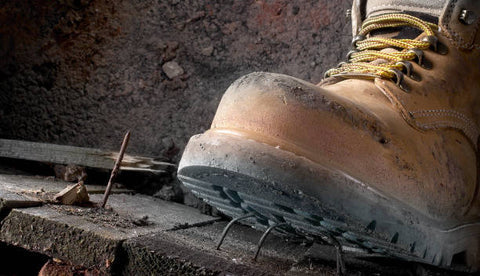- Impact resistance: The toe area of the shoe must withstand an impact of at least 200 joules.
- Compression resistance: The toe section of the shoe must withstand a compression of at least 15,000 newtons.
- Resistance to penetration forces: The sole of the shoe must withstand penetration forces of at least 1100 Newtons.
- Flexural strength: Footwear must be able to flex for at least 50,000 cycles without any signs of wear.
- Slip resistance of the sole: When tested on a ceramic tile with a diluted soap solution, the coefficient of friction of the shoe sole must be at least 0.3.
- The upper part of the shoe upper is resistant to at least 15 newtons per millimeter of width without tearing.
- Resistance to fuel oil: Contact with fuel oil should not have a significant effect on the sole or upper of the shoe.
- Water penetration: When tested according to the requirements of the standard, the shoe must not allow water to penetrate.
- Water absorption: Shoes cannot hold more than 2% of their weight in water.
The standard also defines several types of safety footwear, each with additional requirements in addition to these basic ones. These courses include:
- SB: non-slip, basic safety footwear with toe cap
- S1: Non-slip safety shoes with closed heel, toe protection and energy absorption
- S1P: Safety shoes with a closed heel, energy-absorbing toe, penetration and slip resistance.
- S2: Safety shoes with a closed heel, energy-absorbing toe and waterproof sole
- S3: non-slip safety shoes with closed heel, toe protection, energy absorption, penetration resistance and water resistance
If the shoes meet the requirements, the manufacturer can also affix the CE mark.
It is important to remember that safety footwear requirements vary from country to country and are not uniform across Europe. It is always advisable to check the laws and specifications of the relevant country before purchasing or using safety footwear.


